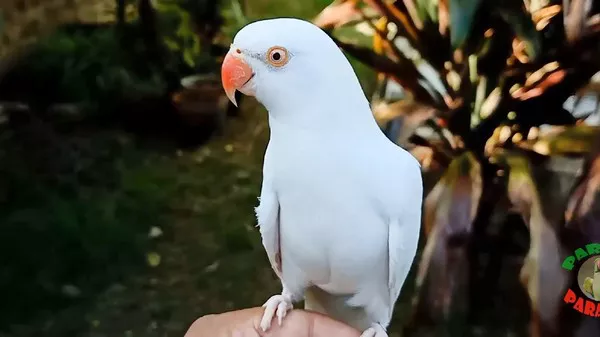Indian Ringneck Parrots, scientifically known as Psittacula krameri, have become increasingly popular as pets due to their vibrant plumage, playful nature, and exceptional intelligence. However, being highly social creatures, these beautiful birds require considerable attention and interaction to thrive in a domestic environment. In this article, we will explore the attention needs of Indian Ringnecks, shedding light on the importance of socialization, mental stimulation, and bonding activities to ensure their well-being and happiness.
Understanding Indian Ringnecks:
Indian Ringnecks are medium-sized parrots known for their striking appearance, including a long tail, slender body, and a distinctive ring of color around their necks (more prominent in males). Originating from Asia, these parrots possess remarkable cognitive abilities, excellent speech mimicking skills, and an innate curiosity about their surroundings. They are highly adaptable and can thrive in different environments, including urban settings and spacious aviaries.
Social Interaction:
Indian Ringnecks thrive on social interaction and can become emotionally distressed if left alone for extended periods. It is essential to spend quality time with your feathered companion on a daily basis. Aim for a minimum of 2 to 3 hours of direct interaction outside the cage to meet their social needs.
- Playtime and Exercise:
Provide your Indian Ringneck with plenty of supervised playtime outside the cage. Offer a variety of stimulating toys, such as puzzle feeders, chew toys, and ropes, to keep them mentally engaged and physically active. Regular flight exercises in a safe and controlled environment can also help them maintain their physical health.
- Human Interaction:
Indian Ringnecks are highly social and bond closely with their human caregivers. They enjoy being included in family activities and should be given opportunities to interact with household members. Include your parrot in daily routines, such as meals or quiet reading time, allowing them to feel part of the flock.
- Socialize with Other Birds:
While Indian Ringnecks can form strong bonds with their human caregivers, they can also benefit from interactions with other birds. Arrange supervised playdates or consider introducing a compatible bird companion if circumstances permit. Ensure proper introductions and gradual acclimation to minimize stress.
Mental Stimulation:
Indian Ringnecks are intelligent birds with active minds that require mental stimulation to prevent boredom and the development of behavioral issues. Engaging their cognitive abilities through various activities is crucial for their overall well-being.
- Training and Trick Learning:
Indian Ringnecks are quick learners and enjoy the mental challenge of training sessions. Teach them simple tricks, such as stepping up on a hand or retrieving objects, using positive reinforcement techniques. Training sessions foster a stronger bond between you and your bird while keeping their minds occupied.
- Enrichment Toys and Games:
Provide a range of interactive toys and puzzles that encourage problem-solving and foraging behavior. Rotate toys regularly to maintain their interest. Hide treats inside toys or create foraging opportunities by scattering food around their enclosure, mimicking their natural instinct to search for food.
- Environmental Stimulation:
Create a stimulating environment by introducing new toys, perches, and swings periodically. Rearrange their cage layout to keep things fresh and provide opportunities for exploration. Offering natural branches for chewing and preening can also engage their senses.
Bonding Activities:
Building a strong bond with your Indian Ringneck is crucial for their emotional well-being. The following activities can help foster trust, companionship, and a deeper connection:
- Gentle Handling and Touch:
Spend time gently handling your Indian Ringneck, gradually building their trust. Stroke their feathers, scratch their head, and engage in physical contact that they enjoy. Be mindful of their body language and preferences, respecting their comfort zones.
- Conversations and Vocal Interactions:
Indian Ringnecks are known for their impressive speech mimicking abilities. Engage in conversations, sing songs, or mimic sounds to encourage vocal interactions. This not only stimulates their vocal abilities but also strengthens the bond between you.
- Shared Mealtime:
Share mealtime experiences with your Indian Ringneck by offering safe, bird-friendly foods. Sit together and enjoy a meal while your bird observes and partakes in their own suitable treats. This shared experience reinforces a sense of belonging and companionship.
Conclusion:
Indian Ringneck Parrots are intelligent and social creatures that require significant attention, interaction, and mental stimulation to lead happy and fulfilling lives as pets. Through regular socialization, mental enrichment, and bonding activities, you can create a nurturing environment that meets their social and cognitive needs. By investing time and effort into building a strong bond, you will not only enhance your Indian Ringneck’s well-being but also experience the joy and companionship these beautiful birds can bring to your life.
Recommended reading:

























